
Capillary barrier system for minimizing rainwater infiltration into the slope, Rahardjo et al 2013
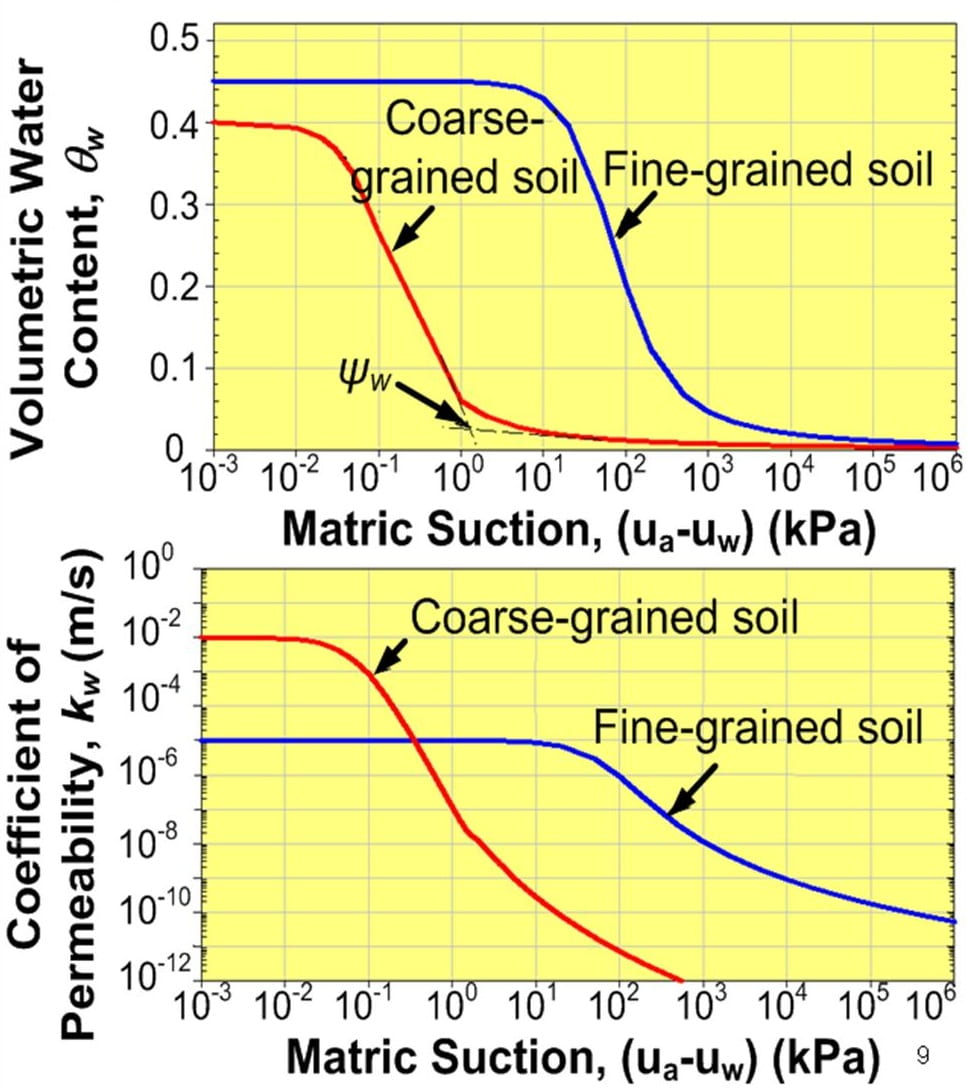
Capillary barrier system using unsaturated soil mechanics principles, Rahardjo et al 2013
Capillary Barrier Systems

Historical Development of Capillary Barrier System (CBS), Rahardjo 2015
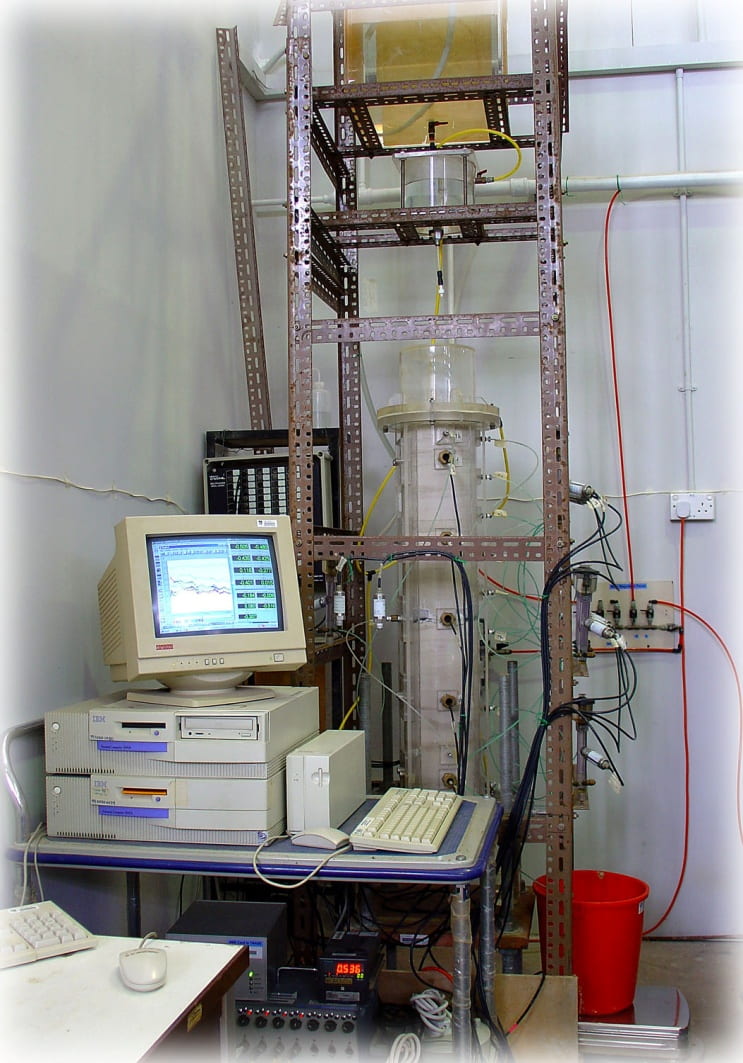

Experimental set-up of 1-D capillary barrier model in laboratory, Yang et al 2004
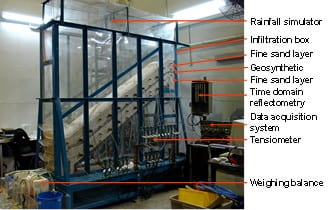
Laboratory model of 2-D capillary barrier system, Tami et al 2004
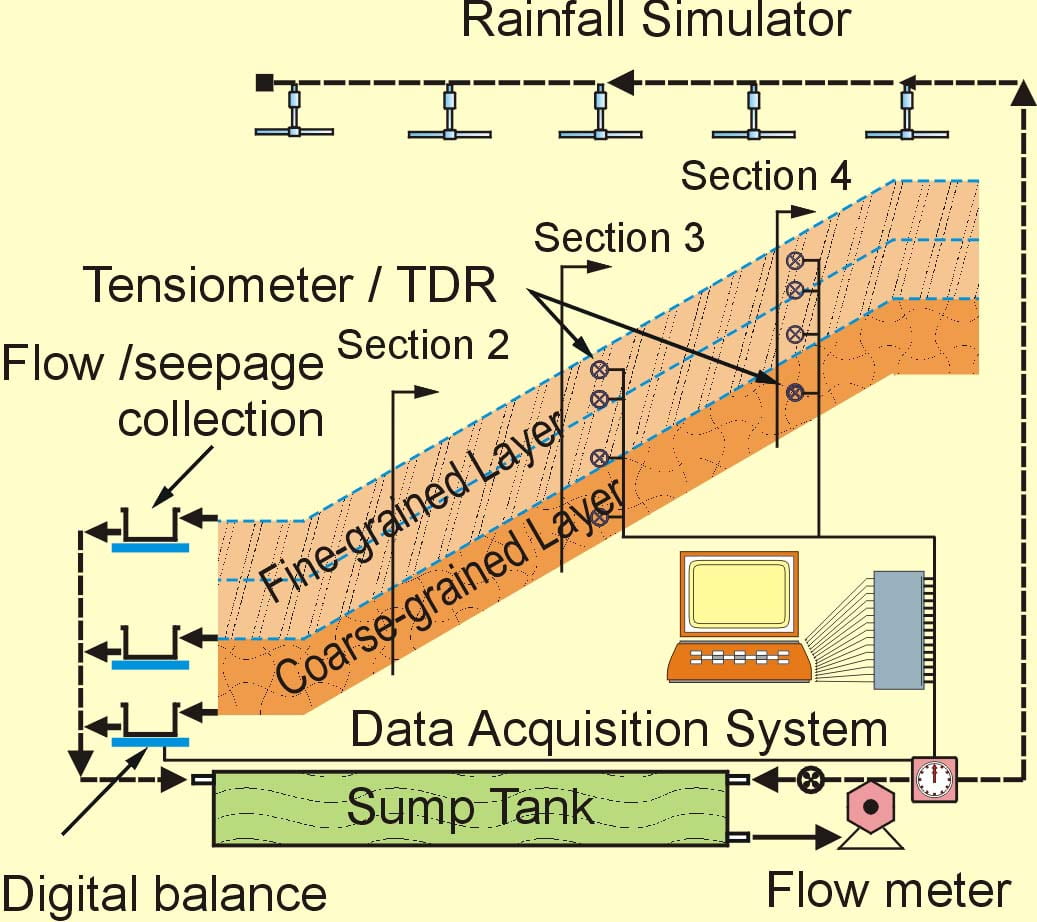
Experimental set-up of 2-D capillary barrier model in laboratory, Tami et al 2004
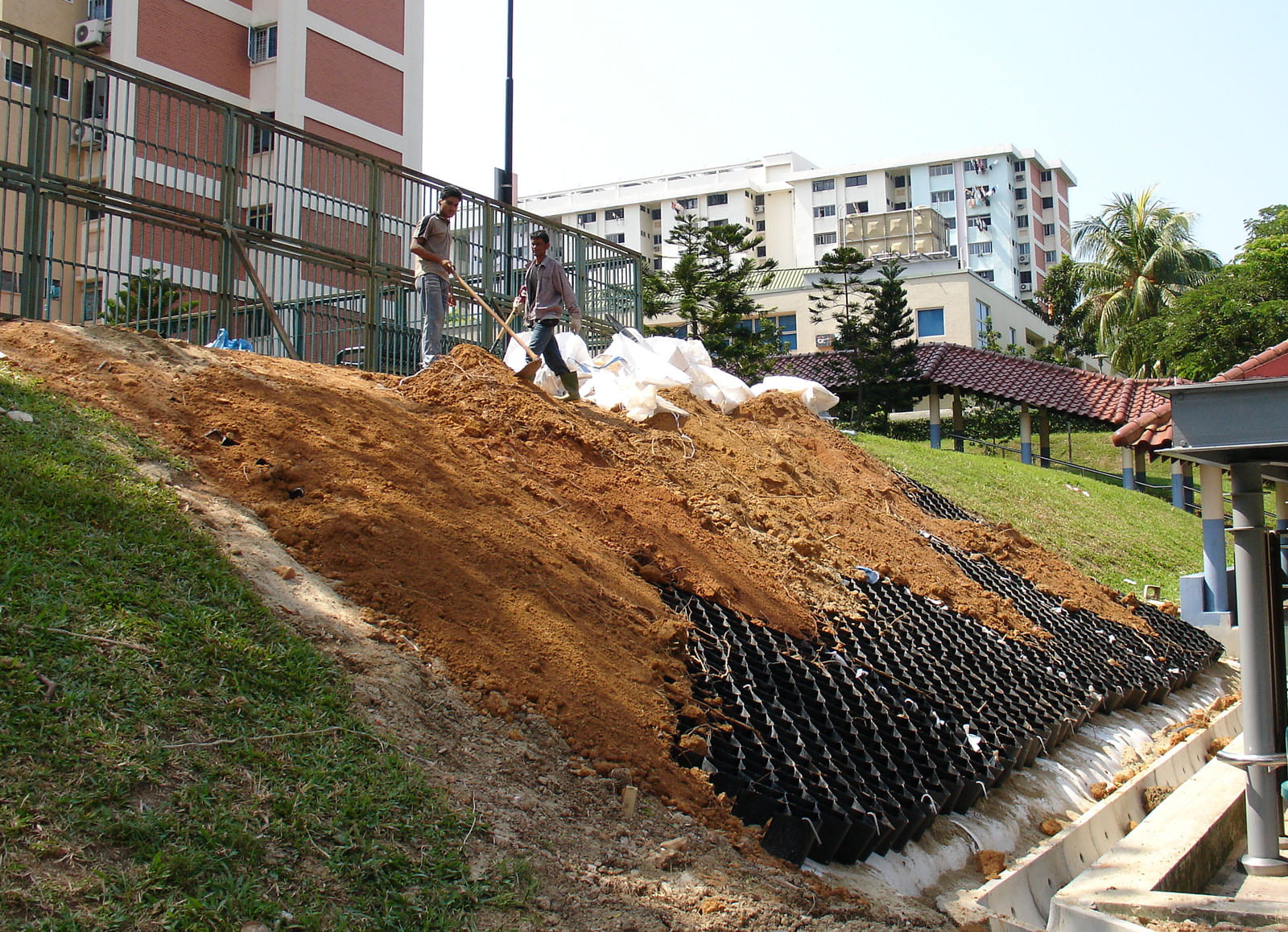
Capillary barrier system at residual soil slope from Old Alluvium at Bedok, Rahardjo et al 2012

Capillary barrier system at residual soil slope from Bukit Timah Granite at Ang Mo Kio, Rahardjo et al 2012
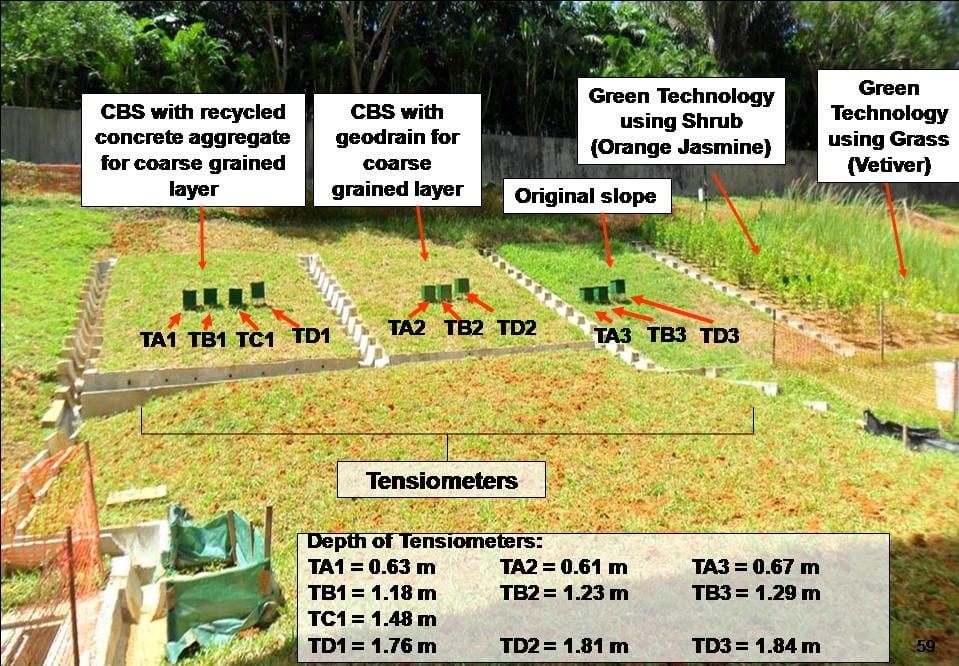
Capillary barrier system at residual soil slope from Old Alluvium at Tampines, Rahardjo et al 2013
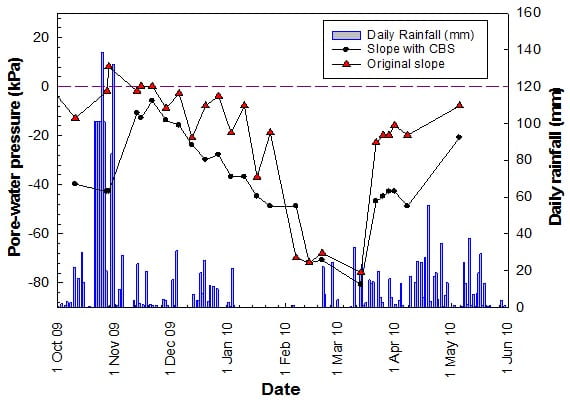
Pore-water pressure variations from original slope and slope with CBS, Rahardjo et al 2012
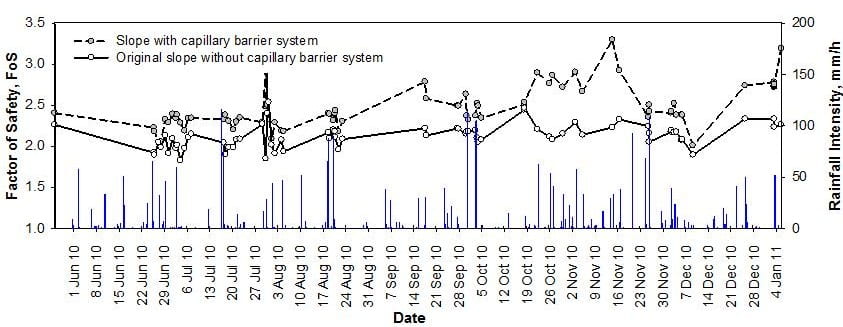
Factor of Safety for Slope with and without CBS during dry and rainy period, Rahardjo et al 2013
References
- Rahardjo, H. (2015). “Capillary barrier as a slope protection.” FIRST DISTINGUISHED LECTURE of AP-UNSAT2015 Conference, 23-26 Oct 2015, Guilin, China, 23-36. doi
- Harnas, F., Rahardjo, H., Leong, E. C. and Wang, J. Y. (2014). “An experimental study on dual capillary barrier using recycled asphalt pavement materials.” Canadian Geotechnical Journal, May, 51(10), 1165-1177. doi
- Rahardjo, H., Santoso, V. A., Leong, E. C., Ng, Y. S., Tam, C. P. H. and Satyanaga, A. (2013). “Use of recycled crushed concrete and secudrain in capillary barrier for slope stabilization.” Canadian Geotechnical Journal, June, 50, 1-12. doi | handle
- Rahardjo, H., Santoso, V. A., Leong, E. C., Ng, Y. S. and Hua, C. J. (2012). “Performance of an instrumented slope covered by a capillary barrier system.” ASCE Journal of Geotechnical and Geoenvironmental Engineering, April, 138(4), 481–490. doi | handle
- Krisdani, H., Rahardjo, H. and Leong, E. C. (2010). “Application of geosynthetic material as a coarse-grained layer in capillary barriers.” Special Issue on Unsaturated Geosynthetics. Geosynthetics International Journal, 17(5), 323–331.
- Indrawan, I. G. B., Rahardjo, H. and Leong, E. C. (2006). “Effects of coarse-grained materials on properties of residuals soil.” Engineering Geology, January, 82(3), 154 – 164. doi | handle
- Krisdani, H., Rahardjo, H., Leong, E. C. (2006). “Experimental study of 1-d capillary barrier model using geosynthetic material as the coarse-grained layer.”Proceedings of 4th International Conference on Unsaturated Soils, Geo Institute, Phoenix, Arizona, U.S.A., 2-5 April, 1683–1694. doi
- Yang, H., Rahardjo, H. and Leong, E. C. (2006). “Behaviour of unsaturated layered soil columns during infiltration.” Journal of Hydrologic Engineering, July, 11(4), 329-337. doi | handle
- Tami, D., Rahardjo, H., Leong, E. C. and Fredlund, D. G. (2004). “Design and laboratory verification of a physical model of sloping capillary barrier.” Canadian Geotechnical Journal, September, 41(5), 814–830. doi | handle
- Yang, H., Rahardjo, H., Wibawa, B., Leong, E. C., (2004). “A soil column apparatus for laboratory infiltration study.” Geotechnical Testing Journal, July, 27(4), 347–355. doi | handle
- Leong, E. C. and Rahardjo, H. (1997). Discussion on the paper entitled: “Unsaturated hydraulic conductivity of two compacted barrier soils.” by Meerdink et al.(1996). ASCE Journal of Geotechnical Engineering, 1227, 565-575. Published in ASCE Journal of Geotechnical Engineering, 123(12), December, 1186-1188.
A capillary barrier is a two-layer system of distinct hydraulic properties that is used as a cover system. The distinct hydraulic properties prevent water infiltration into the soil below the capillary barrier system by utilizing unsaturated soil mechanics principles. The mechanics and performance of Capillary Barrier System (CBS) as a slope protection have been investigated through laboratory tests, numerical analyses and field tests at Nanyang Technological University (NTU), Singapore. Several slopes protected by CBS have been constructed and fully instrumented. The results of this study on CBS illustrate good performance of CBS as a slope protection against rainfall-induced slope failures. In addition, the use of recycled materials as capillary barrier materials have been studied and found to be feasible. An improved system using Dual Capillary Barrier (DCB) has been developed and shown to be more superior to the Single Capillary Barrier (SCB). A retaining wall system incorporating capillary barrier principles, named GeoBarrier System (GBS) has also been developed for its use in underground basement carpark.
